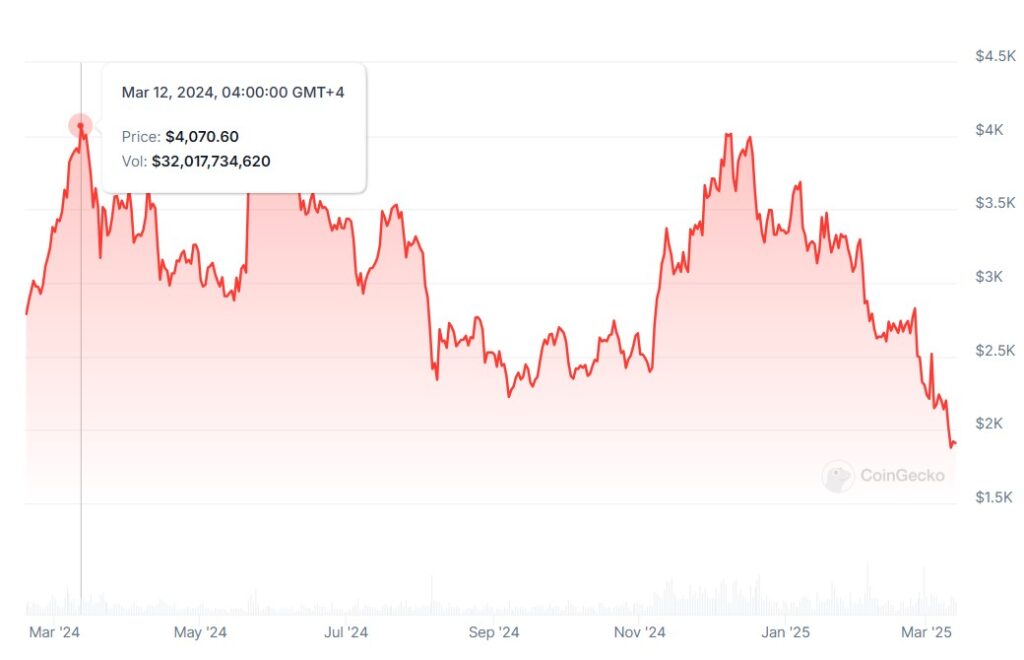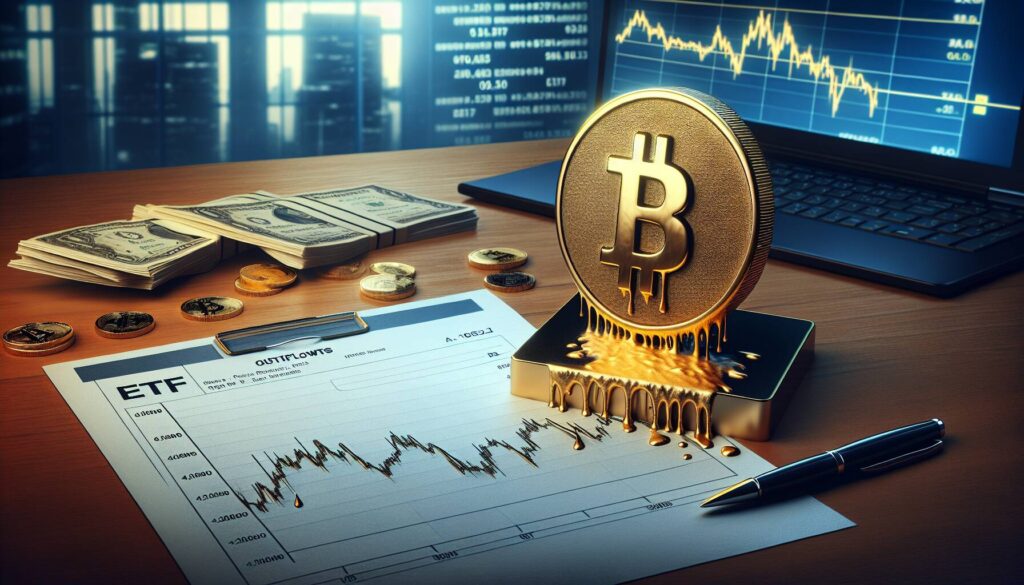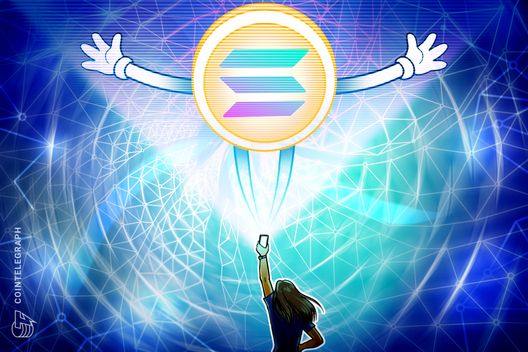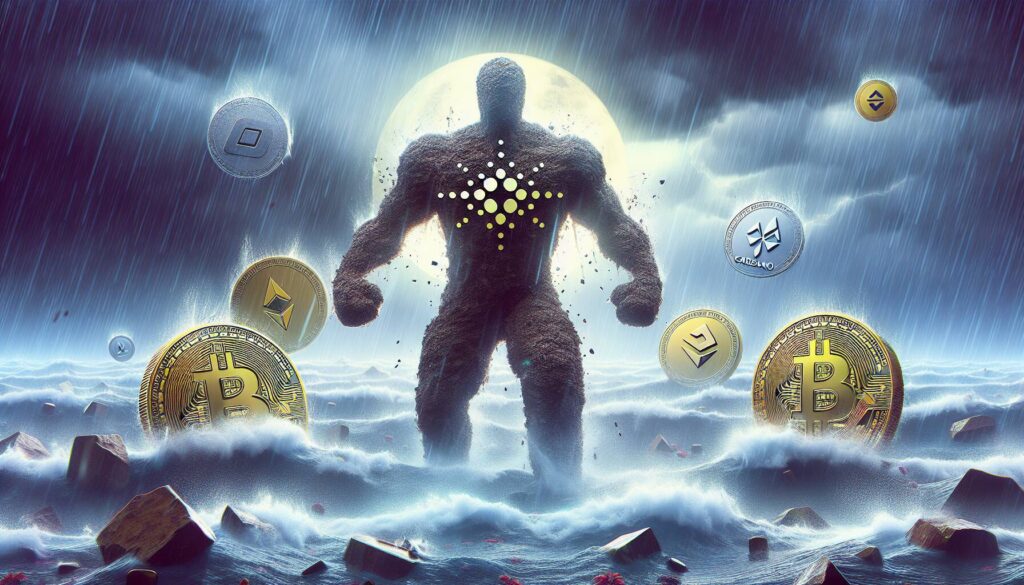The cryptocurrency landscape is witnessing significant shifts as Ethereum experiences a remarkable transformation following its Dencun upgrade. Initially rolled out on March 13, 2024, this upgrade was designed to enhance Ethereum’s scalability and significantly lower transaction costs for users. In a striking development, data from YCharts shows that the average gas fee on Ethereum has plummeted by an astounding 95%, dropping from 72 gwei to just 2.7 gwei over the past year. This decrease translates to average fees for transactions, such as swaps and non-fungible token (NFT) sales, now costing users mere cents instead of the previous average of around and 5, respectively.
However, this drop in fees has not been mirrored in the price of Ether (ETH), which has seen a staggering decline of 53% since the Dencun upgrade. After peaking at over ,070, the cryptocurrency’s value has sunk to approximately ,891 as of March 13, 2025, according to CoinGecko. This contrast raises questions about Ethereum’s current market dynamics, as highlighted by Dominik Harz, co-founder of hybrid layer-2 Build on Bitcoin (BOB). He noted that Ethereum has “underperformed” recently, suggesting that while lower gas fees may benefit users, the network is grappling with a broader identity crisis in the competitive DeFi space.
“It’s clear the industry is searching for a new, more sustainable and secure frontier for DeFi.”
As the Ethereum community looks forward to the upcoming Pectra upgrade, planned to enhance layer-2 capabilities even further, recent hiccups during the test phase have raised concerns. Issues such as error messages and empty blocks have surfaced, although the development team has been proactive in stabilizing the testnet. Harz asserts that while the Pectra upgrade is intended to double data space and reduce costs, it might not be a comprehensive solution to the deeper challenges Ethereum faces in maintaining its status as a leading choice for developers and innovators in the crypto space.
Impact of Ethereum’s Dencun Upgrade
The Dencun upgrade has brought significant changes to the Ethereum network, notably affecting gas fees and the overall perception of Ethereum’s viability in the crypto space. Here are the key points regarding these changes:
- Significant Drop in Gas Fees:
- Average Ethereum gas fees decreased by 95%, from 72 gwei to 2.7 gwei.
- Average costs for swaps dropped from to [openai_gpt model=”gpt-4o-mini” prompt=”Based on the article content, generate a list of key points in an HTML format using Bold, UL/OL. Focus solely on the most important aspects, and describe how they might be related or impact the readers life if at all. Begin with a title using
HTML tag in this format: ‘
Title Goes Here
‘. Use only
,
- ,
- , and
tags. DO NOT include a ‘Conclusion’ section! Here is the topic description: ‘The average Ethereum gas fee has dropped by 95% in the year following the Dencun upgrade, one of Ethereum’s most significant network improvements.On March 13, 2024, Ethereum’s Dencun upgrade was rolled out. The upgrade combined the Cancun upgrade on the execution layer and the Deneb upgrade on the consensus layer. It also introduced nine Ethereum Improvement Proposals (EIPs).The primary goal was to enhance Ethereum’s scalability and reduce transaction costs for layer-2 networks. According to YCharts data, Ethereum’s average gas fee has fallen from 72 gwei in 2024 to just 2.7 gwei as of March 12, 2025.Last year, an average swap cost users $86 in fees, while non-fungible token sales averaged $145 in gas fees. At the time of writing, Etherscan data showed that an average swap would cost $0.39, while an NFT sale would average $0.65. Ethereum average gas fee. Source: YCharts Ether price has dropped 53% since the Dencun UpgradeDespite the sharp drop in gas fees, Ether (ETH) price has declined by 53% since the Dencun upgrade.During the upgrade in March 2024, ETH was trading above $4,070. One year later, as of March 13, 2025, ETH was valued at around $1,891, according to CoinGecko data.Ether’s 1-year price chart. Source: CoinGeckoIn a statement sent to Cointelegraph, Dominik Harz, the co-founder of hybrid layer-2 Build on Bitcoin (BOB), said Ethereum has “underperformed” recently:“Monday’s price drop erased all DeFi TVL gains since Trump’s election. Between Solana’s memecoin frenzy and Ethereum’s fractured few months, it’s clear the industry is searching for a new, more sustainable and secure frontier for DeFi.” Related: More than 50% of validators signal to increase ETH gas limitUpcoming Pectra upgrade sees hiccupsOn March 5, Ethereum’s next major upgrade, Pectra, rolled out on its final testnet, Sepolia. However, the team started seeing error messages and empty blocks being mined.Ethereum developer Marius van der Wijden confirmed that a fix was deployed, but an unknown user later triggered the same error, leading to further issues. The development team has since managed to stabilize the testnet and successfully process transactions.Harz said that while these testnet issues are “disrupting the mainnet launch,” they are far from Ethereum’s biggest problems. The executive said that once Pectra goes live, it will double the available data space for layer-2s, reduce costs and increase execution capacity. “While that’s a step in the right direction, the reality is that Ethereum is quickly losing its position as the go-to chain for builders, and Pectra isn’t the fix-all solution to its deeper issues,” Harz said. Magazine: Crypto fans are obsessed with longevity and biohacking: Here’s why'”].39, while NFT sales fell from 5 to [openai_gpt model=”gpt-4o-mini” prompt=”Based on the article content, generate a list of key points in an HTML format using Bold, UL/OL. Focus solely on the most important aspects, and describe how they might be related or impact the readers life if at all. Begin with a title using
HTML tag in this format: ‘
Title Goes Here
‘. Use only
,
- ,
- , and
tags. DO NOT include a ‘Conclusion’ section! Here is the topic description: ‘The average Ethereum gas fee has dropped by 95% in the year following the Dencun upgrade, one of Ethereum’s most significant network improvements.On March 13, 2024, Ethereum’s Dencun upgrade was rolled out. The upgrade combined the Cancun upgrade on the execution layer and the Deneb upgrade on the consensus layer. It also introduced nine Ethereum Improvement Proposals (EIPs).The primary goal was to enhance Ethereum’s scalability and reduce transaction costs for layer-2 networks. According to YCharts data, Ethereum’s average gas fee has fallen from 72 gwei in 2024 to just 2.7 gwei as of March 12, 2025.Last year, an average swap cost users $86 in fees, while non-fungible token sales averaged $145 in gas fees. At the time of writing, Etherscan data showed that an average swap would cost $0.39, while an NFT sale would average $0.65. Ethereum average gas fee. Source: YCharts Ether price has dropped 53% since the Dencun UpgradeDespite the sharp drop in gas fees, Ether (ETH) price has declined by 53% since the Dencun upgrade.During the upgrade in March 2024, ETH was trading above $4,070. One year later, as of March 13, 2025, ETH was valued at around $1,891, according to CoinGecko data.Ether’s 1-year price chart. Source: CoinGeckoIn a statement sent to Cointelegraph, Dominik Harz, the co-founder of hybrid layer-2 Build on Bitcoin (BOB), said Ethereum has “underperformed” recently:“Monday’s price drop erased all DeFi TVL gains since Trump’s election. Between Solana’s memecoin frenzy and Ethereum’s fractured few months, it’s clear the industry is searching for a new, more sustainable and secure frontier for DeFi.” Related: More than 50% of validators signal to increase ETH gas limitUpcoming Pectra upgrade sees hiccupsOn March 5, Ethereum’s next major upgrade, Pectra, rolled out on its final testnet, Sepolia. However, the team started seeing error messages and empty blocks being mined.Ethereum developer Marius van der Wijden confirmed that a fix was deployed, but an unknown user later triggered the same error, leading to further issues. The development team has since managed to stabilize the testnet and successfully process transactions.Harz said that while these testnet issues are “disrupting the mainnet launch,” they are far from Ethereum’s biggest problems. The executive said that once Pectra goes live, it will double the available data space for layer-2s, reduce costs and increase execution capacity. “While that’s a step in the right direction, the reality is that Ethereum is quickly losing its position as the go-to chain for builders, and Pectra isn’t the fix-all solution to its deeper issues,” Harz said. Magazine: Crypto fans are obsessed with longevity and biohacking: Here’s why'”].65.
- ,
- , and
- Ether Price Decline:
- Ether (ETH) has seen a 53% decline in value since the Dencun upgrade, from over ,070 to around ,891.
- This disparity between reduced gas fees and lowered ETH prices raises concerns for investors and users.
- Upcoming Pectra Upgrade Issues:
- The Pectra upgrade faces challenges, including testnet errors and empty blocks.
- Despite fixes being deployed, these issues highlight the fragility of Ethereum’s infrastructure.
- Long-Term Viability Concerns:
- Industry sentiment indicates a search for more sustainable and secure DeFi environments beyond Ethereum.
- Critics suggest that while Pectra aims to improve scalability, it may not resolve Ethereum’s deeper challenges.
- ,
“Ethereum is quickly losing its position as the go-to chain for builders, and Pectra isn’t the fix-all solution to its deeper issues.” – Dominik Harz
The reductions in gas fees can benefit everyday users and traders by lowering transaction costs, but the declining Ether price and underlying network issues may affect long-term investments and the ecosystem’s stability. Readers should be aware of these dynamics, as they can impact their engagement with Ethereum and its related services.
Ethereum Gas Fee Drop: A Double-Edged Sword in the Crypto Landscape
The recent plunge in Ethereum’s gas fees, dropping an astounding 95% post-Dencun upgrade, has stirred significant conversations in the crypto community. This drastic reduction shifts the cost dynamics of transactions on the Ethereum blockchain, making it more appealing for developers and users alike. Given that average transaction costs have fallen from a hefty to less than [openai_gpt model=”gpt-4o-mini” prompt=”Given the product description, provide a comparative analysis with similar news in the category. Do not directly repeat the details. Instead, focus on the news competitive advantages and disadvantages, and suggest who the news is could benefit or create problems for. Use engaging, human-like language and incorporating keywords naturally for SEO purposes. Begin with a title using
HTML tag in this format: ‘
Title Goes Here
‘. Use only
and tags. DO NOT include a ‘Conclusion’ section! Here is the topic description: ‘The average Ethereum gas fee has dropped by 95% in the year following the Dencun upgrade, one of Ethereum’s most significant network improvements.On March 13, 2024, Ethereum’s Dencun upgrade was rolled out. The upgrade combined the Cancun upgrade on the execution layer and the Deneb upgrade on the consensus layer. It also introduced nine Ethereum Improvement Proposals (EIPs).The primary goal was to enhance Ethereum’s scalability and reduce transaction costs for layer-2 networks. According to YCharts data, Ethereum’s average gas fee has fallen from 72 gwei in 2024 to just 2.7 gwei as of March 12, 2025.Last year, an average swap cost users $86 in fees, while non-fungible token sales averaged $145 in gas fees. At the time of writing, Etherscan data showed that an average swap would cost $0.39, while an NFT sale would average $0.65. Ethereum average gas fee. Source: YCharts Ether price has dropped 53% since the Dencun UpgradeDespite the sharp drop in gas fees, Ether (ETH) price has declined by 53% since the Dencun upgrade.During the upgrade in March 2024, ETH was trading above $4,070. One year later, as of March 13, 2025, ETH was valued at around $1,891, according to CoinGecko data.Ether’s 1-year price chart. Source: CoinGeckoIn a statement sent to Cointelegraph, Dominik Harz, the co-founder of hybrid layer-2 Build on Bitcoin (BOB), said Ethereum has “underperformed” recently:“Monday’s price drop erased all DeFi TVL gains since Trump’s election. Between Solana’s memecoin frenzy and Ethereum’s fractured few months, it’s clear the industry is searching for a new, more sustainable and secure frontier for DeFi.” Related: More than 50% of validators signal to increase ETH gas limitUpcoming Pectra upgrade sees hiccupsOn March 5, Ethereum’s next major upgrade, Pectra, rolled out on its final testnet, Sepolia. However, the team started seeing error messages and empty blocks being mined.Ethereum developer Marius van der Wijden confirmed that a fix was deployed, but an unknown user later triggered the same error, leading to further issues. The development team has since managed to stabilize the testnet and successfully process transactions.Harz said that while these testnet issues are “disrupting the mainnet launch,” they are far from Ethereum’s biggest problems. The executive said that once Pectra goes live, it will double the available data space for layer-2s, reduce costs and increase execution capacity. “While that’s a step in the right direction, the reality is that Ethereum is quickly losing its position as the go-to chain for builders, and Pectra isn’t the fix-all solution to its deeper issues,” Harz said. Magazine: Crypto fans are obsessed with longevity and biohacking: Here’s why'”].40, it’s clear that Ethereum’s efforts to enhance scalability and reduce costs are yielding results. However, while low fees attract users, they also present nuanced challenges that can impact various stakeholders in the market.
Competitive Advantages: The most apparent advantage of reduced gas fees is heightened accessibility. More users and smaller investors can now engage in transactions that previously deterred participation due to high costs. This change can foster innovation and investment in decentralized finance (DeFi) platforms, which may enhance the overall ecosystem surrounding Ethereum. Moreover, the reduced costs significantly benefit projects leveraging Ethereum for non-fungible tokens (NFTs) and other applications as the fees become more manageable, potentially revitalizing markets that had slowed down.
Competitive Disadvantages: On the flip side, the drastic fee reduction coupled with a 53% drop in Ether’s price suggests that while onboarding new users is pivotal, maintaining investor confidence is equally essential. As the price of ETH has plummeted since the Dencun upgrade, concerns grow over Ethereum’s long-term viability. The sentiment echoed by industry voices, like that of Dominik Harz, indicates that Ethereum may struggle to retain its status as the primary layer for decentralized applications (dApps) amidst emerging competitors like Solana, which are characterized by lower fees and rapid transaction speeds.
Impact on Stakeholders: For developers and startups building on Ethereum, the low gas fees present a golden opportunity for experimenting with new projects without the fear of exceeding budget constraints. However, established platforms may find themselves feeling the pinch as the more favorable conditions for newcomers could dilute their user base. Additionally, investors focusing on Ether’s price may find decision-making more challenging as favorable network conditions do not align scalably with its market value. The impending Pectra upgrade, while promising enhancements in data processing, also raises eyebrows due to prior testnet issues, potentially complicating Ethereum’s recovery trajectory.
In summary, while the dip in gas fees appears beneficial, the intertwined challenges of Ether’s price and ongoing developmental hurdles reveal a complex narrative where potential rewards come with added risks. Stakeholders are encouraged to monitor these shifts closely, as both opportunities and challenges lie ahead in Ethereum’s evolving landscape.
- , and

















